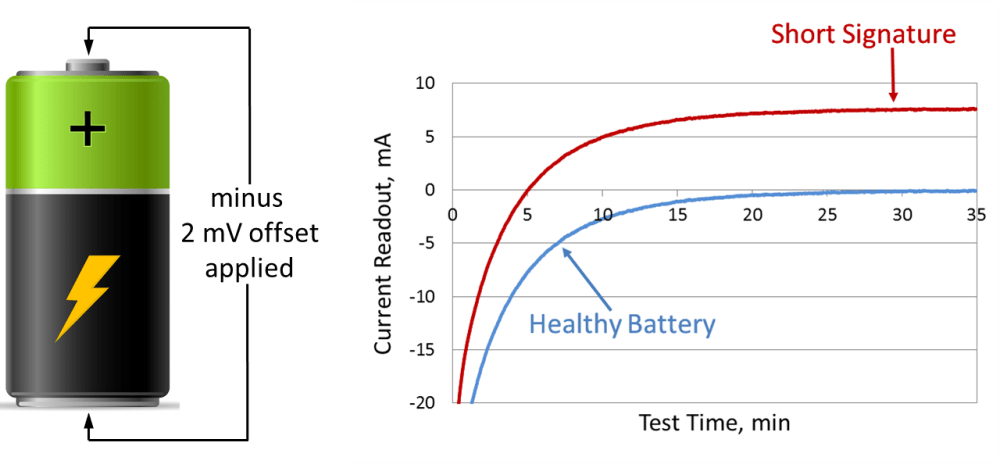

Catastrophic failure concerns of Li-ion batteries including excessive heating, fires and explosions create anxiety in battery consumer markets, especially as larger and more powerful Li-ion battery architecture hits the marketplace.
The main cause of failure is the internal short-circuit, which causes thermal runaway and ignition of the battery flammable materials.
Available methods to detect expected battery failure are not precise, costly, and time-consuming requiring days, weeks or even months. Internal shorts significantly increase normal cell leakage (self-discharge) which can be used as a metric for short detection and catastrophic failure prediction.
INL’s Battery Health Sentry is a simple and accurate technique for rapidly detecting internal shorts via fast measurement of self-discharge current in lithium-ion batteries.
The method involves connecting the cell, fragment of battery architecture or whole architecture to a voltage source and applying small negative voltage offset (several mV), causing negligible discharge, while monitoring a current response.
For a healthy battery with low self-discharge, current stabilizes at a very small value above zero (blue curve). Batteries with shorts display higher stabilized self-discharge current values (red curve) which is a signature a defective cell in danger of catastrophic failure.
Currently, industrial serial instruments detecting internal shorts are not available. The patented novel INL’s method differs from published ideas on the subject by exceptional precision, simplicity, low cost, and speed of detection. The method algorithm is designed to be used with any appropriate voltage source or battery charger available on the market. That provides low-cost solution. The method is noninvasive and universal. While developed for Li-ion batteries, it can be applied to any battery chemistry or design including the cells imbedded in complex battery architectures with parallel-series connections. It is successfully validated for quick search of compromised cell in the battery architectures.
Battery Health Sentry can enhance battery-using device safety, help consumers assess battery health and performance during lifetime, and give manufacturers a superior quality assurance and control tool. The market for this method will grow with the rapidly growing battery market. The main public benefits include elimination of property damage, personal injury or loss of life, product recalls and increase in consumer confidence in battery related products.
Battery Health Sentry can be used by cell (battery) manufacturers to enable rapid defect detection after cell manufacturing. The internal leakage metric allows cell manufacturers to sort out defective cells while quickly moving healthy units to market. In a world of lean manufacturing and just-in-time inventory, it offers efficiency while guaranteeing consistent quality and safety for end users.
The method can be used for batteries in portable electronic devices, electric drive vehicles, underwater and aerospace applications, or grid-level stationary energy storage systems. First responders to accidents involving electric drive vehicles could use the test to ensure wrecked batteries are stable. Commercial airlines could use it to ensure cargo and passengers remain safe on aircraft. At the end of battery life in electric vehicles, the method can be used for battery repurpose for secondary use.
Video
-
Awards
-
 2020 Electronics/Sensors/IoT Honorable Mention
2020 Electronics/Sensors/IoT Honorable Mention -
 2020 Top 100 Entries
2020 Top 100 Entries
Like this entry?
-
About the Entrant
- Name:Andrew Rankin
- Type of entry:teamTeam members:Sergiy Sazhin, Eric Dufek, Kevin Gering
- Patent status:patented

